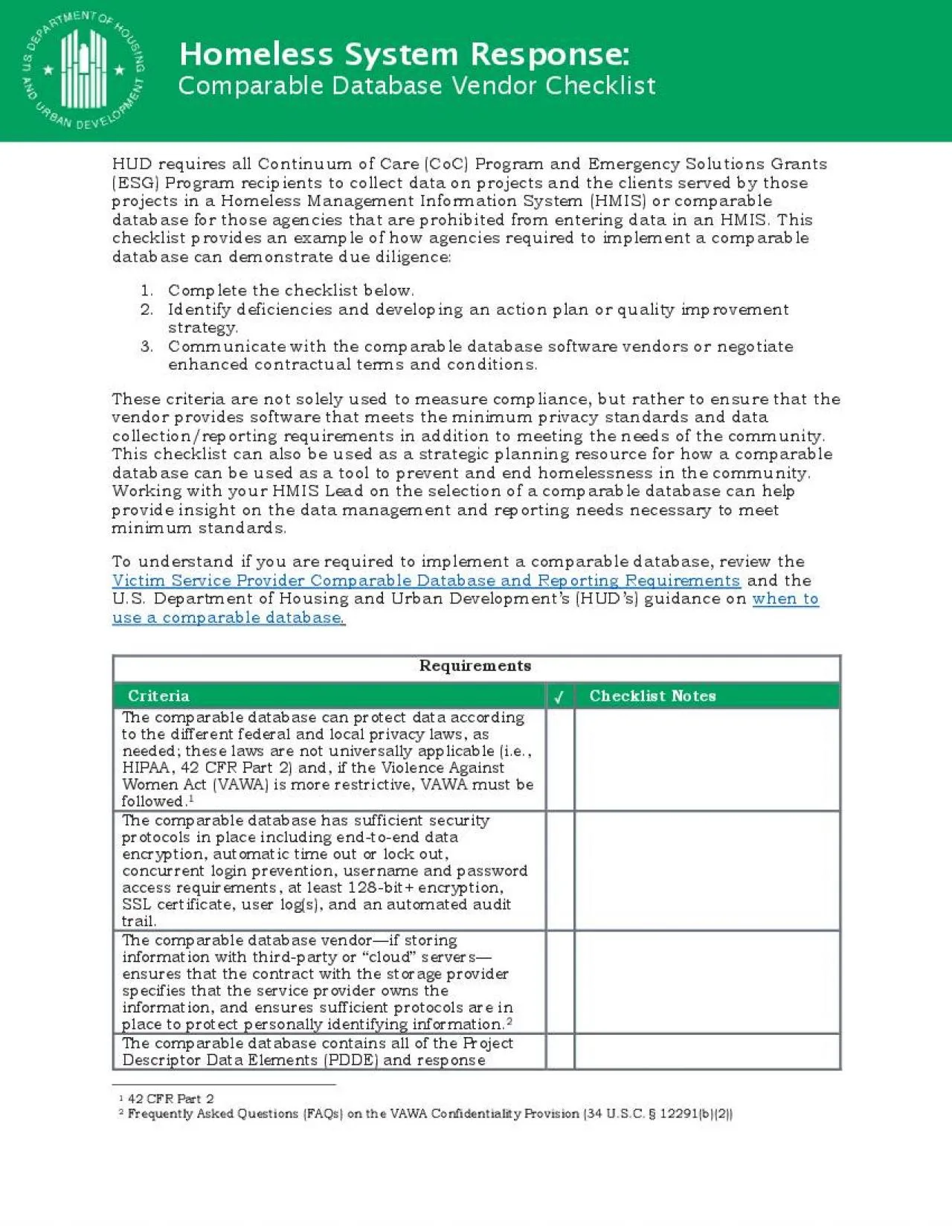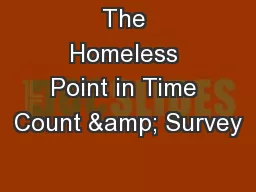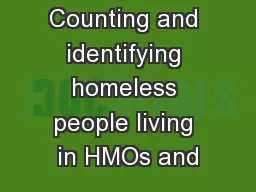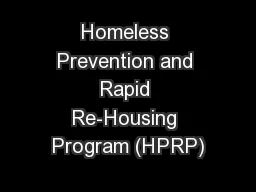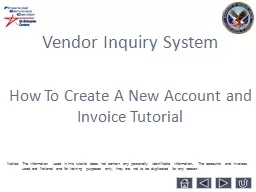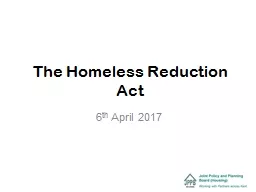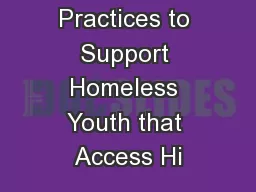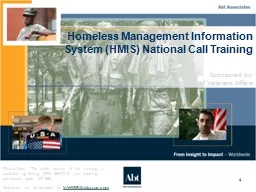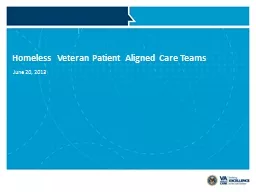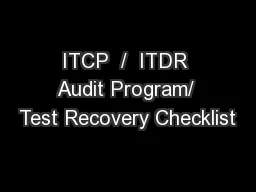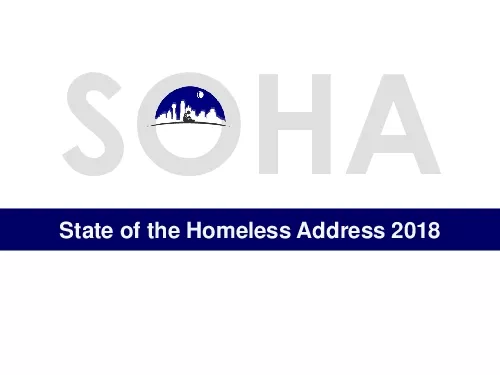PDF-Homeless System ResponseComparable Database Vendor Checklist
Author : deena | Published Date : 2021-10-09
HUD requires all Continuum of Care CoC Program and Emergency Solutions Grants ESG Program recipients to collect data on projects and the clients served by those
Presentation Embed Code
Download Presentation
Download Presentation The PPT/PDF document "Homeless System ResponseComparable Datab..." is the property of its rightful owner. Permission is granted to download and print the materials on this website for personal, non-commercial use only, and to display it on your personal computer provided you do not modify the materials and that you retain all copyright notices contained in the materials. By downloading content from our website, you accept the terms of this agreement.
Homeless System ResponseComparable Database Vendor Checklist: Transcript
Download Rules Of Document
"Homeless System ResponseComparable Database Vendor Checklist"The content belongs to its owner. You may download and print it for personal use, without modification, and keep all copyright notices. By downloading, you agree to these terms.
Related Documents

